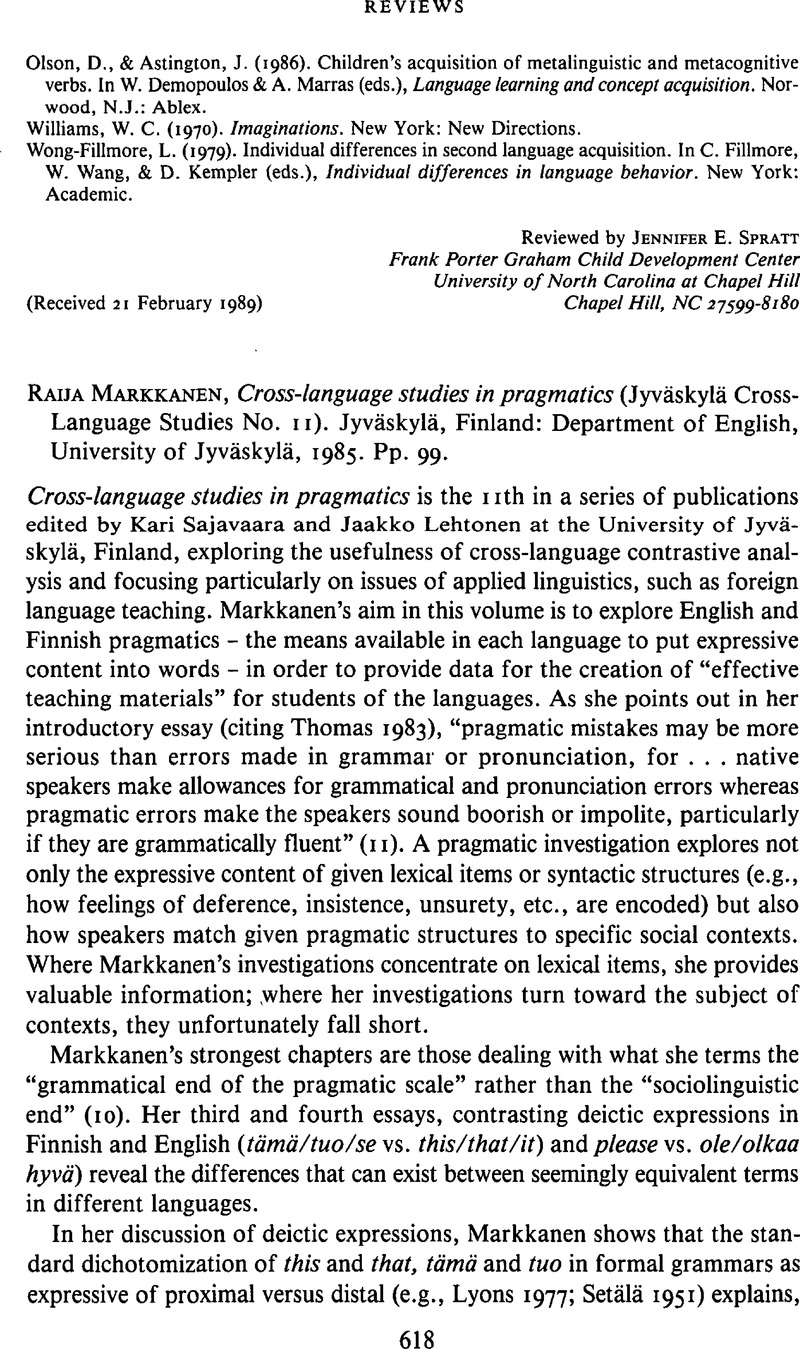No CrossRef data available.
Article contents
Educational linguistics - Raija Markkanen, Cross-language studies in pragmatics (Jyväskylä Cross-Language Studies No. 11). Jyväskylä, Finland: Department of English, University of Jyväskylä, 1985. Pp. 99.
Published online by Cambridge University Press: 18 December 2008
Abstract
An abstract is not available for this content so a preview has been provided. Please use the Get access link above for information on how to access this content.

- Type
- Book Review
- Information
- Copyright
- Copyright © Cambridge University Press 1989
References
REFERENCES
Franck, D. (1981). Seven sins of pragmatics: Theses about speech act theory, conversational analysis, linguistics, and rhetoric. In Parret, H., Sbisa, M., & Verschuren, J. (eds.), Possibilities and limitations of pragmatics. Proceedings of the conference on pragmatics. Urbino; 07 8–14, 1974. Amsterdam: John Benjamins. 225–36.CrossRefGoogle Scholar
Fraser, B. (1981). Acquiring social competence in a second language. RELC Journal 9(2): 1–26.CrossRefGoogle Scholar
Kay, P. (ed.) (1971). Explorations in mathematical anthropology. Cambridge: MIT Press.Google Scholar
Labov, W. (1966). The social stratification of English in New York City. Washington, D.C.: Center for Applied Linguistics.Google Scholar
Thomas, J. (1983). Cross-cultural pragmatic failure. Applied Linguistics 4:91–112.CrossRefGoogle Scholar
Walters, J. (1981). Introduction. In J. Walters (ed.), The sociolinguistics of deference and politeness (Special issue of International Journal of the Sociology of Language 27). 7–10.CrossRefGoogle Scholar


